Summary of Climate Disasters on the Planet from May 22 to May 28, 2024
Oceania
Papua New Guinea
On May 24, during the early morning hours, a massive and destructive landslide leveled the village of Yambali in Enga Province, northern Papua New Guinea.
Residents who were still asleep at the time were buried alive under tons of mud and debris.
The landslide covered an area of about 22 acres (9 hectares), which is
equivalent to the size of 12 football fields.
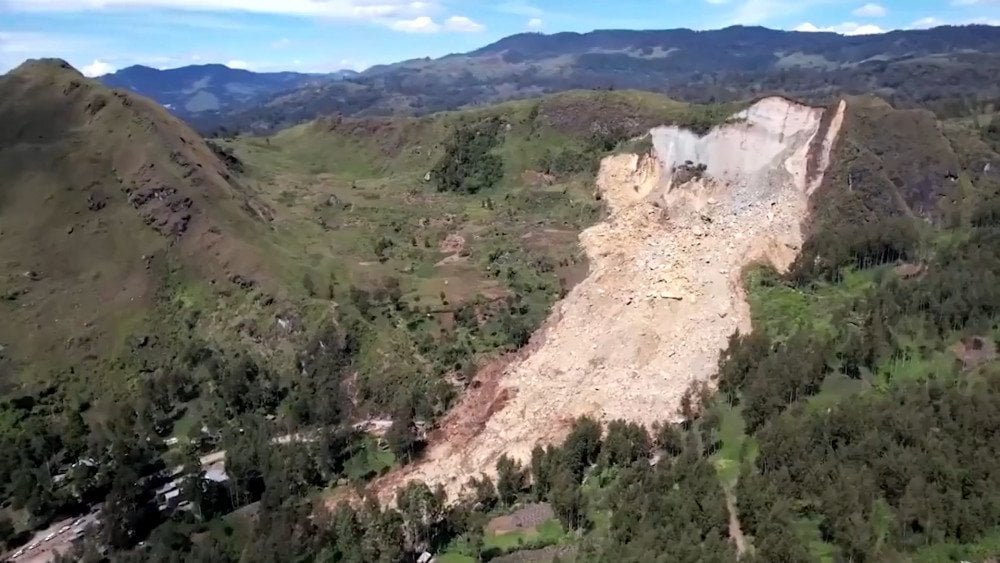
Giant landslide in Enga Province, Papua New Guinea
The estimated number of victims of the landslide varies greatly. According to the UN, about 670 people died, while a report from the government of Papua New Guinea states that more than 2,000 people perished.
The landslide blocked a 200-meter section of the province's main highway, burying it under a massive, up to 8 meters high, layer of soil and rock. The village could only be accessed by helicopter, severely hampering aid and supplies.
In search of their deceased relatives, people dug through the debris with shovels and sticks. The first earth-moving equipment was an excavator provided by a local builder two days later.
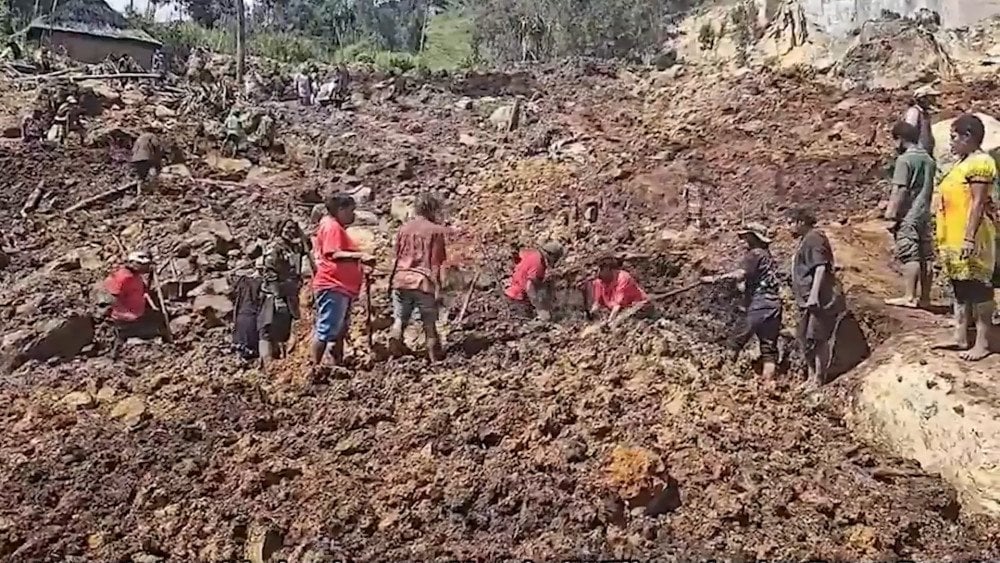
Local residents digging through landslide debris in search of people, Enga Province, Papua New Guinea
Due to continued rains and unstable ground, there is a risk of new landslides that could affect other communities and villages. The decomposition of bodies combined with contaminated water could lead to the spread of infections and diseases. As a result, 7,900 residents have already been forced to leave villages near the landslide, and thousands more have been ordered to prepare for evacuation.
In recent months, residents of Papua New Guinea have suffered from a series of earthquakes and floods, which likely triggered this powerful landslide.
Determining the true scale of the disaster is difficult due to the challenging terrain where the landslide occurred, including the lack of telecommunications, the remote location of the village, and intertribal wars throughout the province.
South America
Brazil
Unprecedented flooding in the state of Rio Grande do Sul has continued for a month. Since the end of April, 169 people have died, and 45 are still missing.
More than 580,000 people remain homeless.
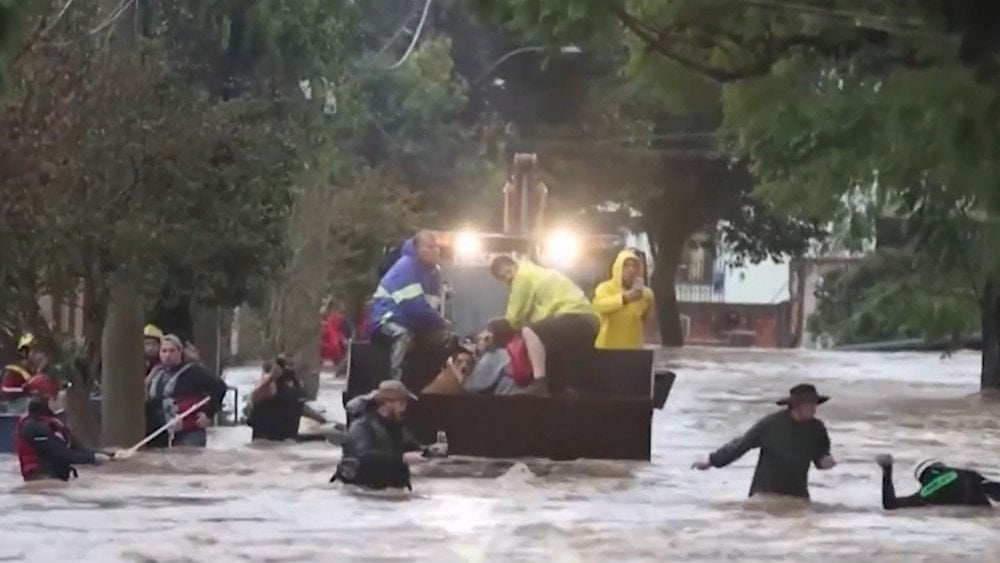
Ongoing flooding, Rio Grande do Sul State, Brazil
The cold that has gripped most of the state has turned an already difficult situation for residents into a true nightmare, as thousands of people live in makeshift camps and cars on the highways sides.
In many cities in the state,
May 25 was the coldest day of 2024,
with a lowest temperature of around 5 °C or even less.
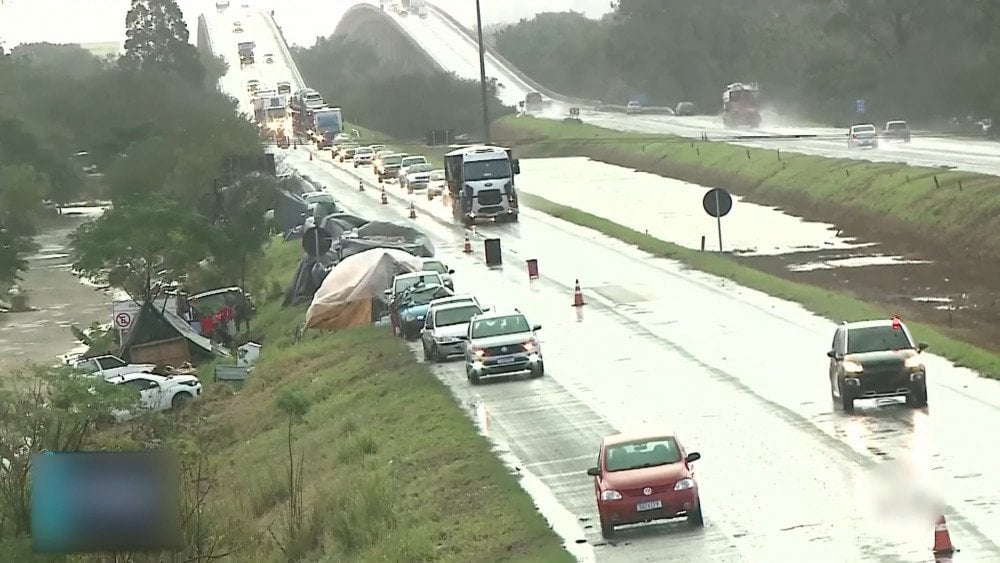
People displaced by floods living in tents on roadsides, Rio Grande do Sul State, Brazil
The scale of losses from the disaster is enormous: the flood affected 469 of the state's 497 municipalities. Governor Eduardo Leite stated that it would take from six months to a year to restore the affected areas. Preliminary estimates indicate that the cost of the rebuilding effort will be $3.64 billion dollars.
In Porto Alegre, the state capital, 664 mm of rain fell in 30 days, accounting for 44% of the average annual rainfall (the average annual norm is 1,494.6 mm). According to MetSul Meteorologia, May 2024 was the rainiest month in the history of weather observations in Porto Alegre.
The city has turned into a “graveyard” of flooded vehicles. The local Salgado Filho Airport has been underwater for over three weeks, with no prospect for resuming its operations.
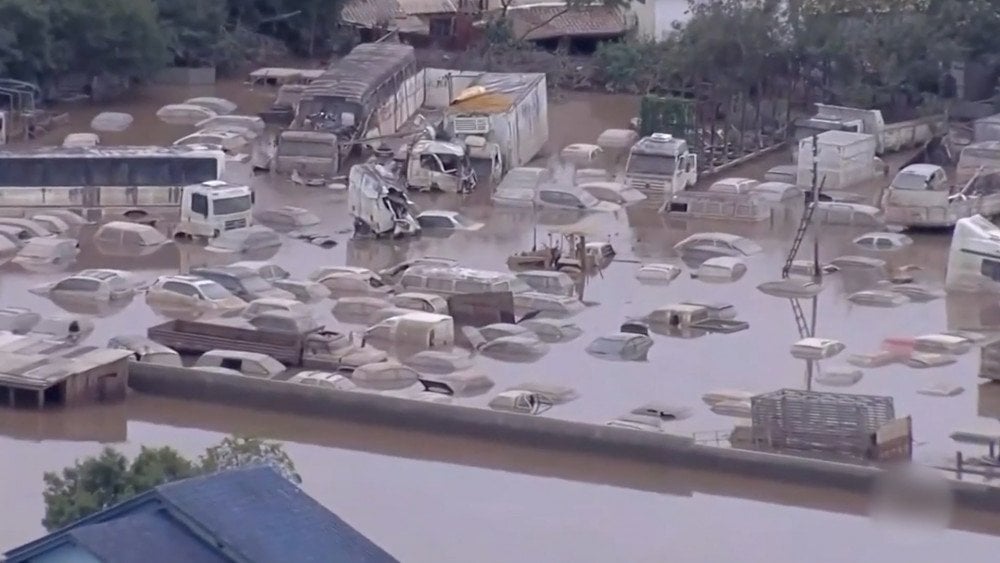
“Graveyards” of flooded cars, Rio Grande do Sul State, Brazil
On May 27, an extratropical cyclone hit the state, and water once again flooded the streets of Porto Alegre. In different parts of the flooded city, piranhas, snakes, and alligators appeared on the streets and even in homes.
North America
Mexico
On May 22, during an election rally in the city of San Pedro Garza García, Nuevo León, Mexico, the stage structure collapsed. As a result, 9 people died and 70 were hospitalized with various injuries. The cause of the tragedy was a sudden gust of wind.
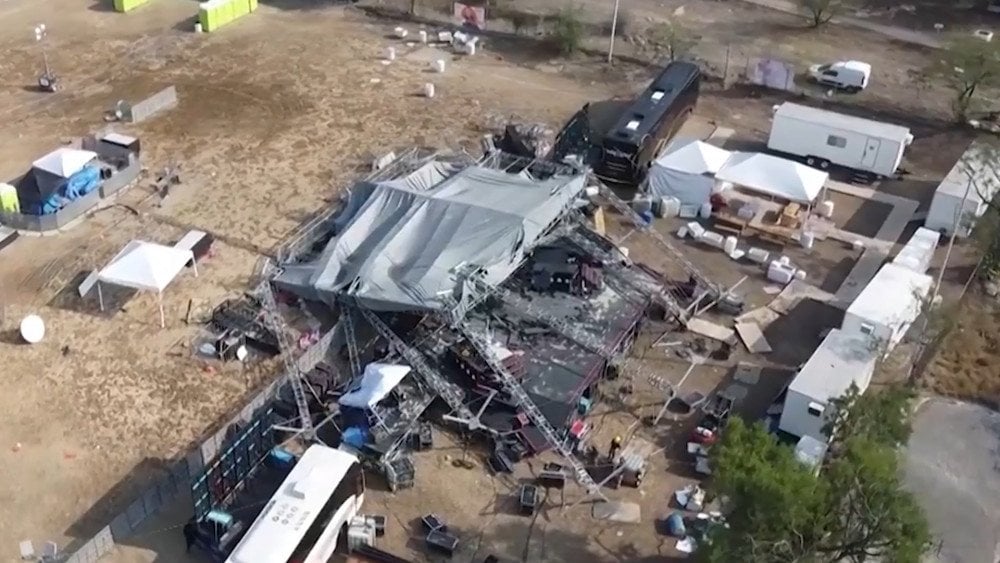
Stage destroyed by sudden gust of wind during election rally, San Pedro Garza García, Mexico
The next day, May 23, a tornado swept through the city of Toluca, the capital of the State of Mexico. It killed two people who were crushed by a fence while trying to find shelter from the rain. Another person miraculously survived despite his car being nearly crushed by the fence. The tornado tore off roofs of houses, leaving residents unprotected from rain and hail. It also uprooted large trees, damaged telephone and streetlight poles, and scattered large water tanks from rooftops.
On May 24, a severe thunderstorm with rain and hail hit the city of Puebla, the capital of the eponymous state. In just an hour and a half, the storm covered the city's streets with a thick layer of ice.
In some areas,
hail drifts reached half a meter in height.
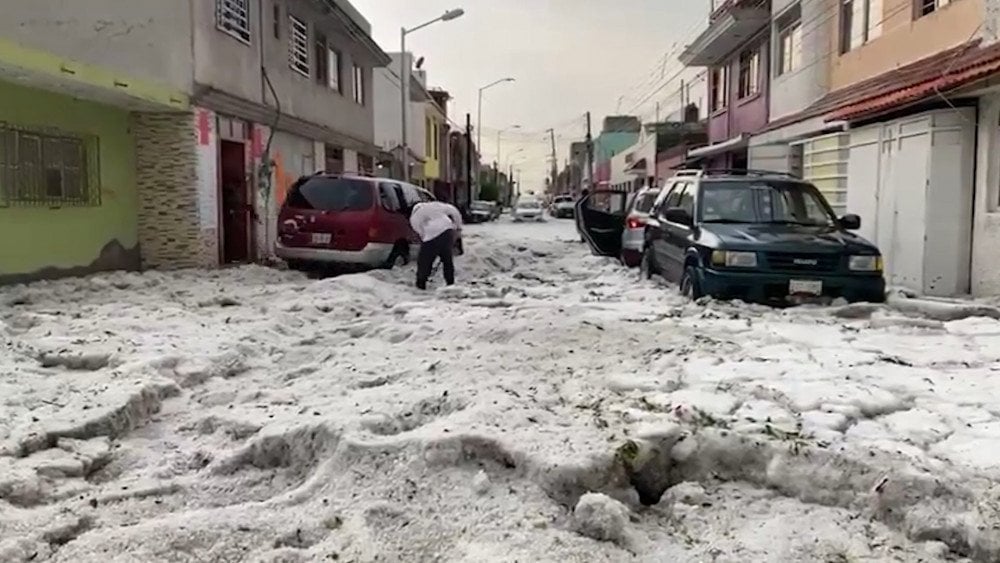
Hail drifts on the streets of Puebla, Mexico
The storm caused damage to businesses and residential buildings, and also disrupted power supply. Strong winds uprooted trees and billboards, and windows were shattered by hail.
The cause of the abnormally strong convective storms, which triggered rain, strong winds, hail, and tornadoes in the country, was extremely high temperatures. This is already the third heat wave in Mexico since mid-March. Since the beginning of the year, 48 people have died from the abnormal heat.
In 19 states, temperatures exceeded 45 °C, and on May 26 in Oaxaca, the hottest day in the state's history was recorded with a temperature of 48 °C.
Such heat is unbearable even for wild animals.

Wild animals dying from heat, Mexico
Local residents reported the deaths of owls, parrots, and squirrels. In the states of Tabasco and Chiapas, howler monkeys, which are endangered, are falling dead from trees. The Institute of Civil Protection of Tabasco (IPCET) attributed the animals' deaths to dehydration due to high temperatures.
USA
Since May 25, the central USA has been hit by an outbreak of extreme weather: tornadoes, giant hail, and powerful winds caused widespread destruction and the deaths of at least 23 people.
The northern part of Texas was severely affected.
A state of emergency was declared in four counties.
In Cooke County,
an EF-2 tornado with wind speeds of 217 km/h
claimed the lives of seven people, including four children. Over 100 people were injured. More than 320 homes and buildings were damaged.
The tornado was
the deadliest in Texas since 2015.

Remains of the houses after the tornado, Texas, USA
In Denton County, the tornado destroyed homes and power lines, damaged marinas and RVs at Lake Ray Roberts. More than 100 people sheltering at a gas station sustained multiple injuries during the storm.
In Mayes County, Oklahoma, an even more powerful EF-3 tornado struck, resulting in the deaths of two people and injuries to several others.
In Arkansas, at least 5 tornadoes were recorded, killing up to 8 people.
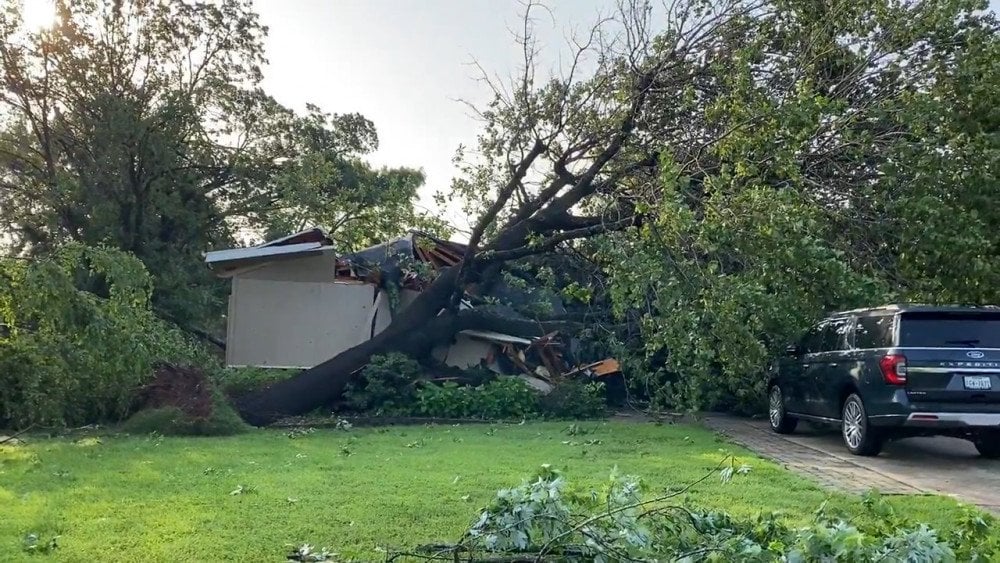
Aftermath of a destructive tornado in Arkansas, USA
In Kentucky, 5 people died due to the strike of the elements. The city of Charleston was seriously damaged. Aerial footage shows cars lying on piles of debris remaining from houses. On Monday, more than 200,000 state residents were still without power.
Missouri saw giant hail over 10 cm in size. Hurricane-force winds were reported in St. Louis. In Alabama, storms brought large hail and wind gusts up to 35 m/s. A person died when a tree fell on a residential house. The storms also affected Illinois and Indiana.
The National Weather Service issued
5 rare tornado emergency warnings
over several days: one in Texas and four in Kentucky.
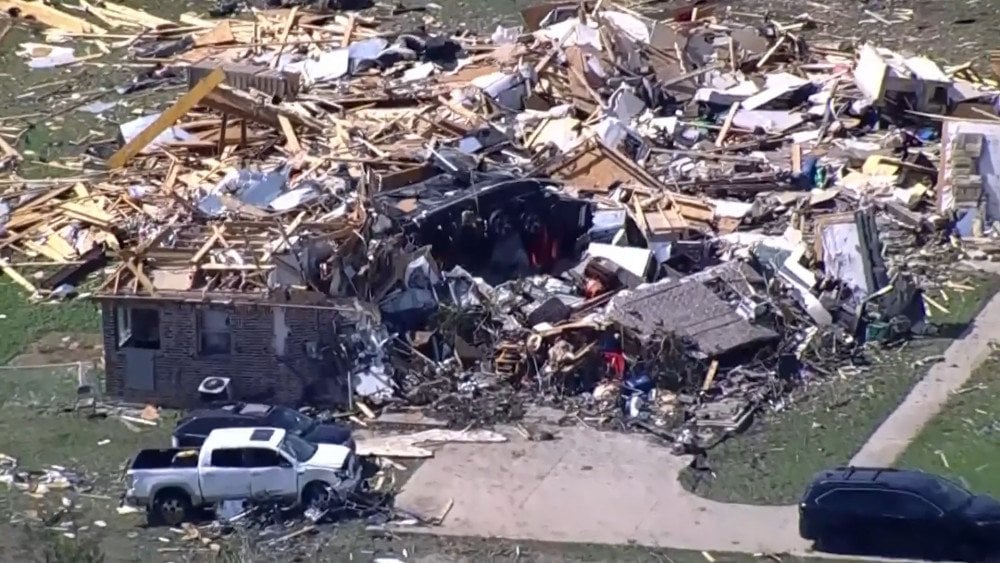
Enormous destruction after powerful tornadoes in the USA
Tornado emergencies are the most serious warnings, issued only when complete devastation is likely and people could be killed.
In the first five months of 2024, there have already been 14 such events. This is more than used to occur in an entire year (an average of about 12 cases).
Europe
Armenia
On May 25, northern Armenia was struck by a natural disaster. The region was hit by heavy rains with a monthly norm of precipitation. As a result of the downpours, the Debed, Aghstev, and Tashir rivers overflowed, leading to the worst flooding in Lori and Tavush Regions since 1970.
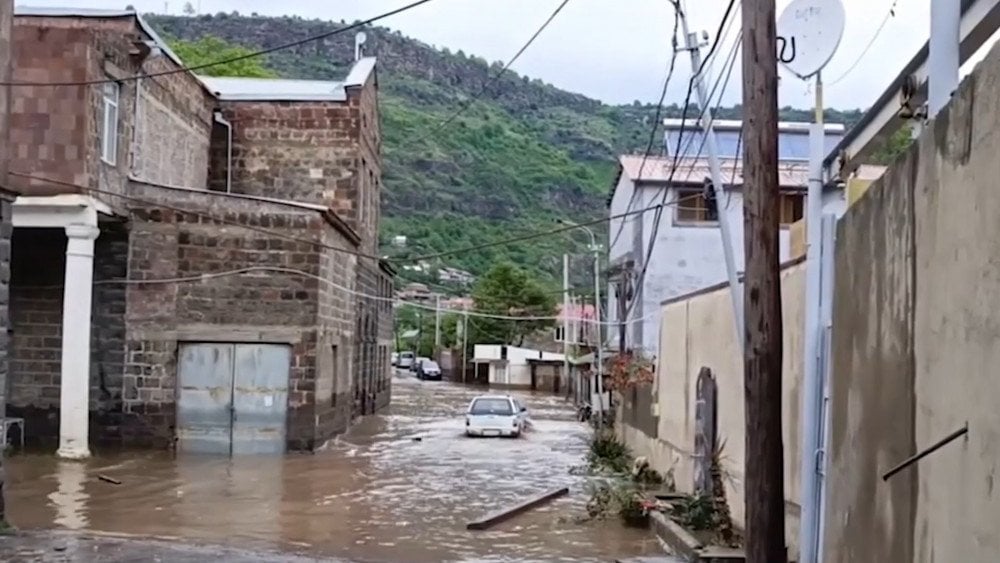
Worst flooding since 1970 in Armenia
The natural disaster claimed the lives of four people, and more than 400 residents were evacuated.
The Lori Region was hit the hardest. The city of Alaverdi was one of the most severely affected. The coastal areas of the Debed River turned into a disaster zone: residential buildings, shops, pharmacies, bank branches, and roads in the city were flooded.
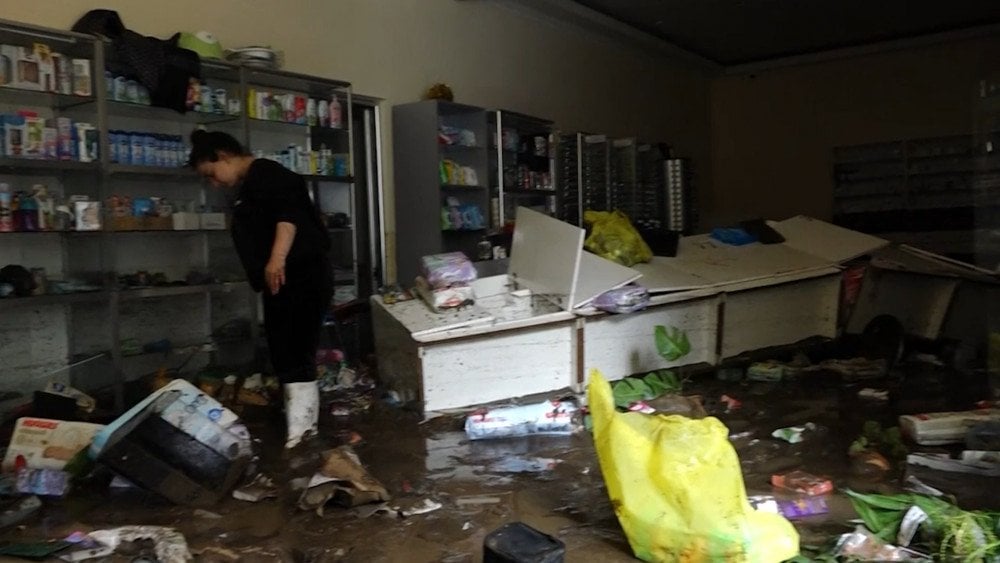
Shops and office spaces flooded by floodwaters, Armenia
Local residents were left without gas, electricity, and drinking water, with communication and the Internet working intermittently. Bridges connecting parts of the city collapsed, and about 200 residents were cut off from the rest of the city. In Alaverdi, a gas station exploded due to a short circuit.
Forty cities and villages in Armenia have been officially declared disaster zones due to the flooding. In certain areas, the floodwaters surged up to the second floors of buildings, trapping residents indoors.
As a result of the disaster, 18 bridges were destroyed, and seven settlements were cut off from the rest of the region. For example, in the village of Chochkan, bridges collapsed at both the entry and the exit of the settlement.
Due to the flooding of the pipeline, water supply was cut off to 16 villages and towns in the north of the country.
Railway communication was also disrupted. Railway sections of 2.5 kilometers long were seriously damaged. A landslide occurred on the part of the Yerevan-Tbilisi highway between the stations of Ayrum and Akhtala. The Tbilisi – Yerevan train, after leaving the capital of Georgia, found itself in the epicenter of flooding on the Armenian border. For about 12 hours the train remained blocked by water from all sides, without communication and electricity. Passengers were evacuated.
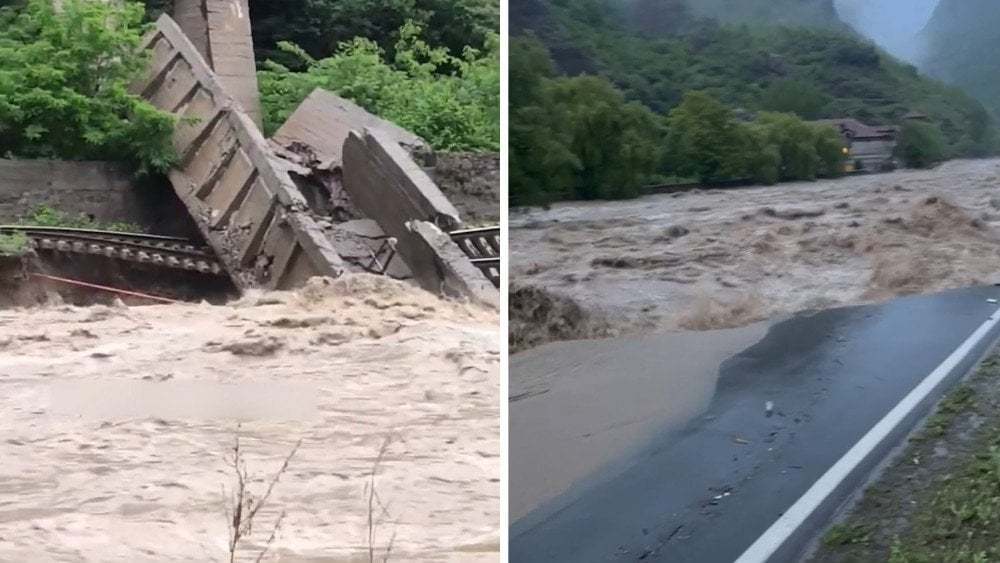
Bridges and roads destroyed by powerful water flows, Armenia
The M6 interstate road linking Armenia and Georgia was damaged in 43 sections. On 5 of them, the road was completely destroyed.
Residents of neighboring Georgia were also affected by the disaster.
Italy
On May 24, a severe storm with heavy rain and hail hit the city of Turin, Italy. In less than an hour, 62 mm of rain fell, and the temperature dropped to 12 °C. The water level in the Dora Riparia River, a left tributary of the Po River, soared by nearly 2.9 meters.
Flooding spread to different parts of the city, shocking residents with its force and duration. Many calls for help were made to the fire department due to stranded vehicles, fallen trees, and flooded basements and garages.
A thick layer of hail covered the roofs of houses. Turin's roads turned into icy rivers, paralyzing traffic, and some underground passages were closed.
Hail drifts some several dozen centimeters high
had to be cleared from the city's streets with bulldozers.

“Icy Rivers” on the streets of Turin, Italy
Significant damage was also inflicted on agriculture. The president of the Italian agricultural producers' association Coldiretti Torino emphasized that hailstorms were rare phenomena for this area, but in the last two years, they have become a real disaster and occur with relentless frequency.
Russia
From May 24 to 26,
a hurricane-force windstorm with gusts up to 35 m/s
raged in the Krasnodar Territory.
During the storm, trees and power lines collapsed, and roofs were torn off houses in various cities of the region. The most serious aftermath of the storm was in Krasnodar, Novorossiysk, Apsheronsk and Armavir.
Residents of these cities reported damage to billboards and road signs. Cars were damaged by fallen trees, and communications outages were also recorded.
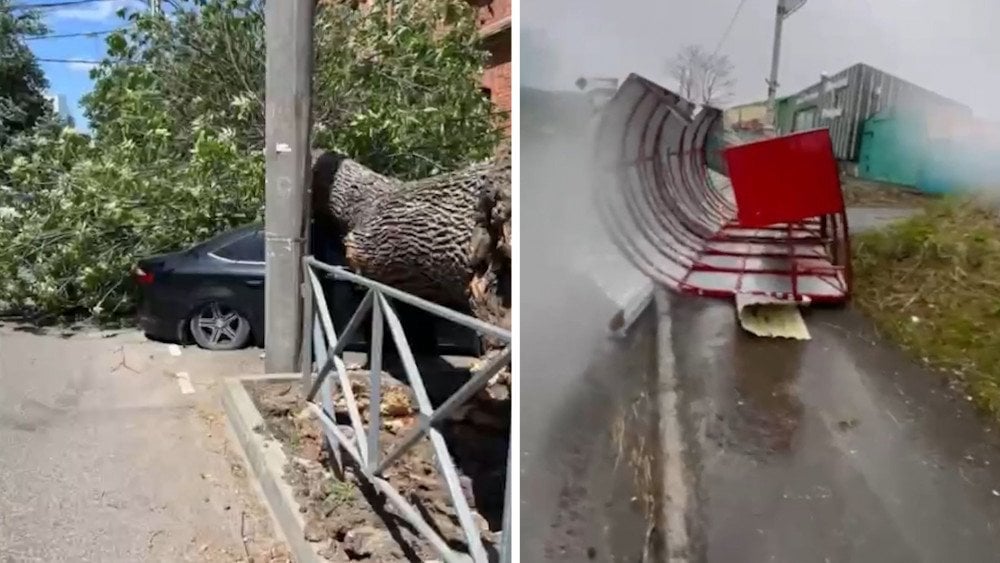
Destructive aftermath of hurricane-force winds in Krasnodar Territory, Russia
In Krasnodar, the storm caused a tragic incident at a school. A sudden gust of wind tore off a piece of roofing during an all-school ceremony and threw it right onto the children standing below.
A mother present at the assembly recounted: “It all happened right before my eyes. Parents were standing behind the school fence. Before the ceremony started, there was a crackling sound, and we saw a piece of roofing fly into the corner of the yard, right onto the children standing there. Panic began, children tried to run out of the yard, while at the same time parents were trying to rush into the yard and find their child...”
As a result of the incident, 12 children were injured and taken to medical facilities with traumas of mild to moderate degrees of severity. The rest of the schoolchildren, who were at the all-school ceremony, suffered severe stress. 187 people had to be evacuated from the school territory.
Asia
Russia
On May 26, a powerful Pacific cyclone hit Kamchatka, bringing torrential rains and hurricane-force winds. The wind tore roofs off houses, toppled trees and poles, overturned bus stops, greenhouses and garbage containers. Pedestrians had to find something to hold on to in order to stay on their feet.
The cyclone dumped nearly four months' worth of rain on the city of Yelizovo, totaling 129 mm (the average monthly norm for May is 33.2 mm). The strongest wind gusts hit the coastal areas. On May 26, at Cape Krestovy, Lopatka, and Ozerny, the hurricane wind speeds reached 40–42 m/s. In Petropavlovsk-Kamchatsky, wind gusts reached 30 m/s. According to meteorologists, the powerful Pacific cyclone that approached Kamchatka on May 26 was atypical. By its characteristics, it was more like a winter cyclone.
India and Bangladesh
On May 26, tropical storm Remal struck the coasts of India and Bangladesh with wind speeds up to 135 km/h.
India Meteorological Department issued a red alert for the coastline of West Bengal. Fishermen were advised not to go to sea.
In both countries,
around 3,750,000 people were affected, and more than 1,000,000 people were evacuated.
At least 54 people died due to the storm.
The storm damaged over 144,000 houses and completely destroyed 37,500.
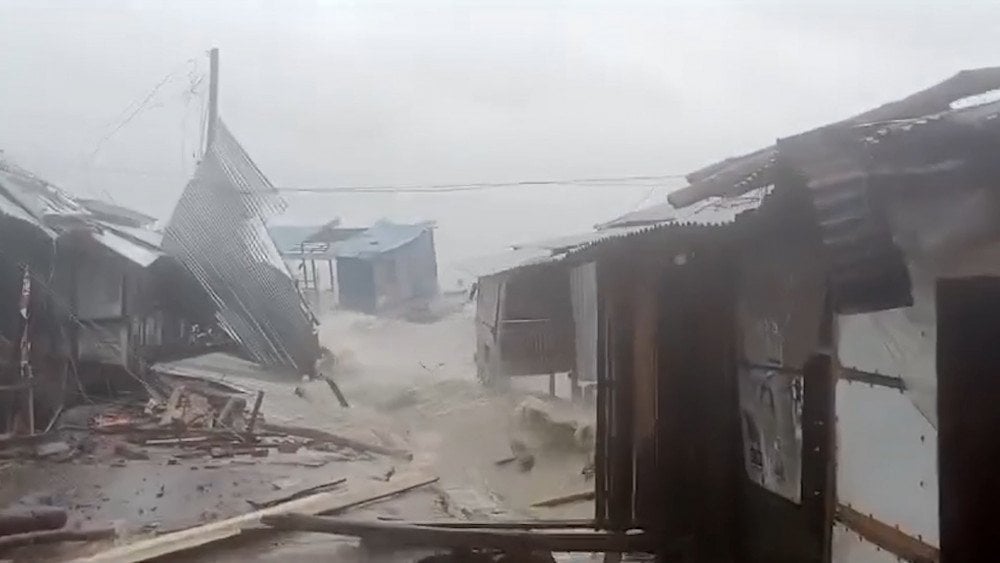
Villages devastated by Tropical Storm Remal, India and Bangladesh
The cyclone disrupted air, rail, and road communication in several districts of southern Bengal.
In some regions, saltwater from the adjacent Bay of Bengal broke through dikes and flooded agricultural lands, damaging crops and causing severe harm.
The progression of climate catastrophes is becoming more apparent with each passing week. Rising global atmospheric and oceanic temperatures are causing a dramatic increase in the frequency and intensity of floods and storms across the planet. However, a large part of the population prefers to ignore this problem, as they do not understand how to deal with it. Meanwhile, there are existing technologies that can slow down the progression of climate disasters. This will give scientists the time required to develop solutions that will help preserve the Earth for future generations.
Information about these unique technologies is presented in the popular science film “Water from Air: The Path to Saving Humanity.”
Watch the video version of this article here:
Leave a comment